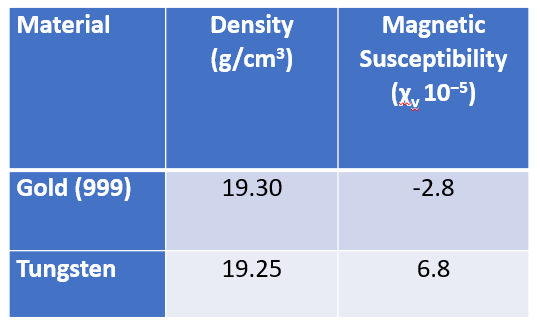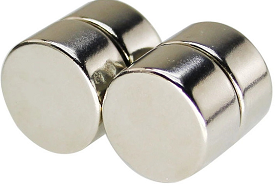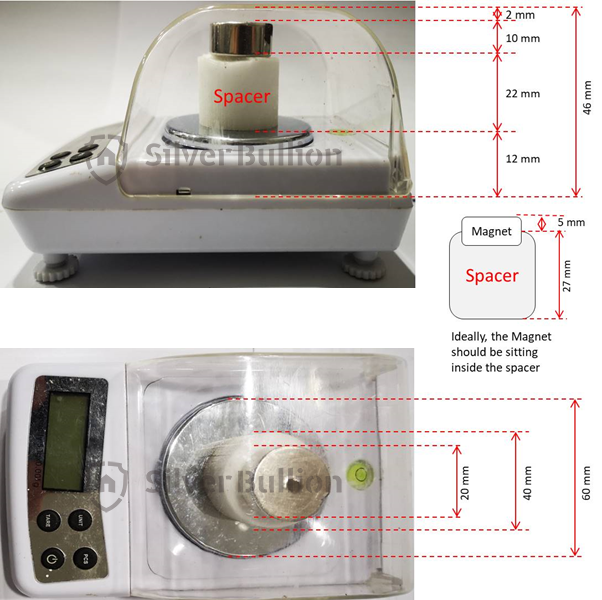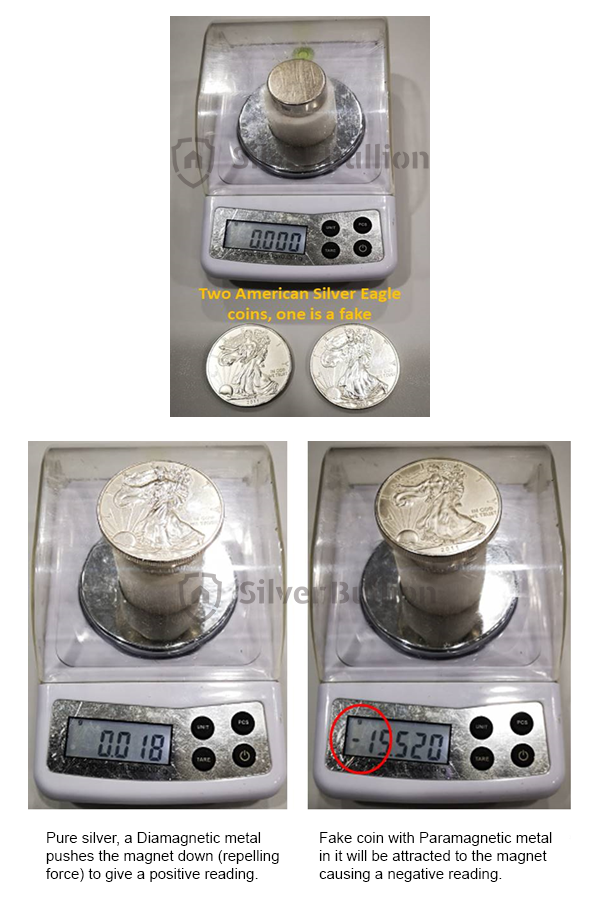Detecting Fake Gold & Silver With Magnetism Can Be Easily Done For Under $50
By Gregor Gregersen (Founder of Silver Bullion & The Safe House)
Verifying the authenticity of precious metals beyond any reasonable doubt requires testing at least three physical characteristics of the metal. It is unlikely for counterfeit bars or coins to successfully pass beyond two tests of physical characteristics. Employing three of such tests will have a high certainty in determining the authenticity of the tested metal.
At The Safe House, our precious metals vault in Singapore, we use up to five ways to test precious metals. We list them below together with the estimated costs of typical testing equipment:
1) Density – using scales or densitometers (cost between 30 USD to 3,000 USD)
2) Celerity (speed of sound) – using ultrasound readers (cost between 100 USD to 1500 USD)
3) Electrical Conductivity Measurement (ECM) – using ECM readers (cost between 600 USD to 12,000 USD)
4) Surface composition – using X-ray Spectrometers (30,000 USD)
5) Magnetic characteristics – measuring magnetic force (50 USD)
While X-ray Spectrometers cost upwards of 30,000 USD, other bullion testing equipment, such as magnetic testing, can be built by anybody for as little as 50 USD and they are surprisingly effective at testing large amounts of bullion.
In the case of gold for example, tungsten is often used to make fake gold bars because the density (aka weight for a given size) of tungsten is 19.25 times that of water which is very close to gold’s density of 19.30. Because it is very easy to tell that a bar is not genuine if it is the wrong size or weight, almost all high-end fake bars utilize tungsten as a filler around a thin layer of gold on the outside.

Despite their close density, gold and tungsten have very different magnetic susceptibility. Gold is a diamagnetic metal - it is repelled by magnets rather than attracted to them. Such metals have their magnetic moments act in opposition to magnetic fields rather than enhance them.
Tungsten on the other hand is a paramagnetic metal – it attracts magnets albeit much weaker compared to ferromagnetic metals such as iron and nickel. The weak magnetic force of a paramagnetic metal cannot be detected when using a standard magnet. Instead, the use of a rare earth magnet like the N52 Neodymium magnet would be more suitable.

A simple test of the magnetic susceptibility between gold and tungsten can be done easily with a digital kitchen scale (with an enclosing plastic cover), a N52 neodymium magnet and a spacer to prop the magnet higher to ensure tested bullion is kept at a consistent distance from the magnet. The image below shows the setup for such a test.

Care needs to be taken with rare earth magnets as they can damage sensitive electronic equipment or demagnetize credit cards. It is quite painful to have skin squeezed between two such magnets.
Once the scale is calibrated to net out the weight of the spacer and magnet, this setup will provide a reading of the magnetic force generated when a precious metal is placed over the plastic enclosure.
This testing method can also be used to detect fake silver coins. The image below shows the test results between a genuine American silver eagle coin and a counterfeit coin. In this example, we placed the coins on the lid of the lid of the scale, the coins do not touch the magnet.

This setup is particularly effective for the quick testing of bullion coins (e.g. gold Canadian maple leaf coins) even if they are kept inside their mint-original plastic tubes. The tube can be held close over the setup and observe the magnetic force (see video) on the scale’s readout. It works also when testing whether the full length of a gold chain.
While this test by itself is not a guarantee of authenticity (at least three tests are required), it is an excellent testing method that can be paired with other measurements such as ECM and density to make a powerful DIY testing system.
